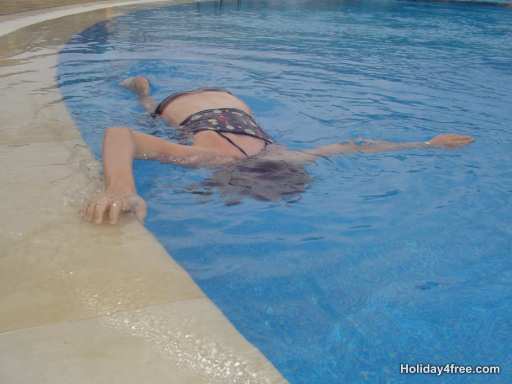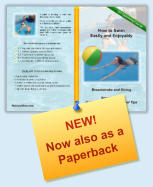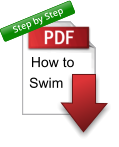



*Ads





How to swim & how to dive
14.2. Training the arms and legs
The swimming teacher always takes exercises from easy to hard and from single to combined, step by step. It is easier if the movements of the arms and legs are first learned separately and later combined into a whole movement. The learner needs to focus their whole concentration on their legwork as, in the breaststroke technique, this is made up of several elements. To do this, the arms can be placed on a pool noodle or on a swimboard (a swimming aid), so that the learner can focus their whole attention on their legwork. Using a rescue bar offers a further option for practicing the movements separately. The learner can hold onto this bar and specifically train their legs or push the water back with one arm, while the teacher pulls them through the water using the bar or a similar aid. These exercises offer the possibility of training the arms and legs individually. Once the learner is able to carry out both partial movements independently of one another, their arm and leg movements can then be coordinated with one another. Learners can initially be trained to move forward through the water by themselves in the shallows, or together with the teacher at the edge of the pool. Diving and orientation under water should be practiced thoroughly beforehand, to enable the learner to focus their whole attention on the sequence of movements. This makes it possible to carry out all movements calmly and carefully, even without a floatation aid. If the head is laid down in the water during the first swimming attempts, the legs automatically float upwards. This results in a better water position and less resistance from the water. The whole body floats and relaxes. The focus here is on moving forwards under water. The water is pushed from front to back using the arms and the body is thereby stretched lengthwise. This enables a first easy forward movement through the water and motivates the learner to continue. This exercise thereby helps them to glide easily through the water and to have the first experiences of success. Regular training helps the movements to become steadily stronger, almost automatically. As soon as a learner has developed enough strength and can perform the swimming technique correctly, they can direct their gaze upwards. This small change in their line of vision marks the beginning of swimming without aids. Next step: How to swim - 15. The brave jump
Ad
Ad
Ad
How to Swim 14.2./20
Breaststroke Swimming
The perfect companion and guide
on learning to swim.
Also available as paperback and PDF
© Holiday4free.com

breaststroke swimming
Equipment
► Paddler:
► Swim Board:
► Swim Boards Colorful:
► Swimming Kickboard:
► Foam Pool Noodles:
► Eco Bar Float:
(Tip: Accessories can often be borrowed from the swimming trainer)
https://amzn.to/3d5tDfT *
https://amzn.to/3wQ0lJH *
https://amzn.to/3j1UCg5 *
https://amzn.to/3xHOygM *
https://amzn.to/3zTSxca *
https://amzn.to/3j3VQaH *
Ad
Ad
Ad
Ad
Ad
Ad




Home
Ad



Ad












